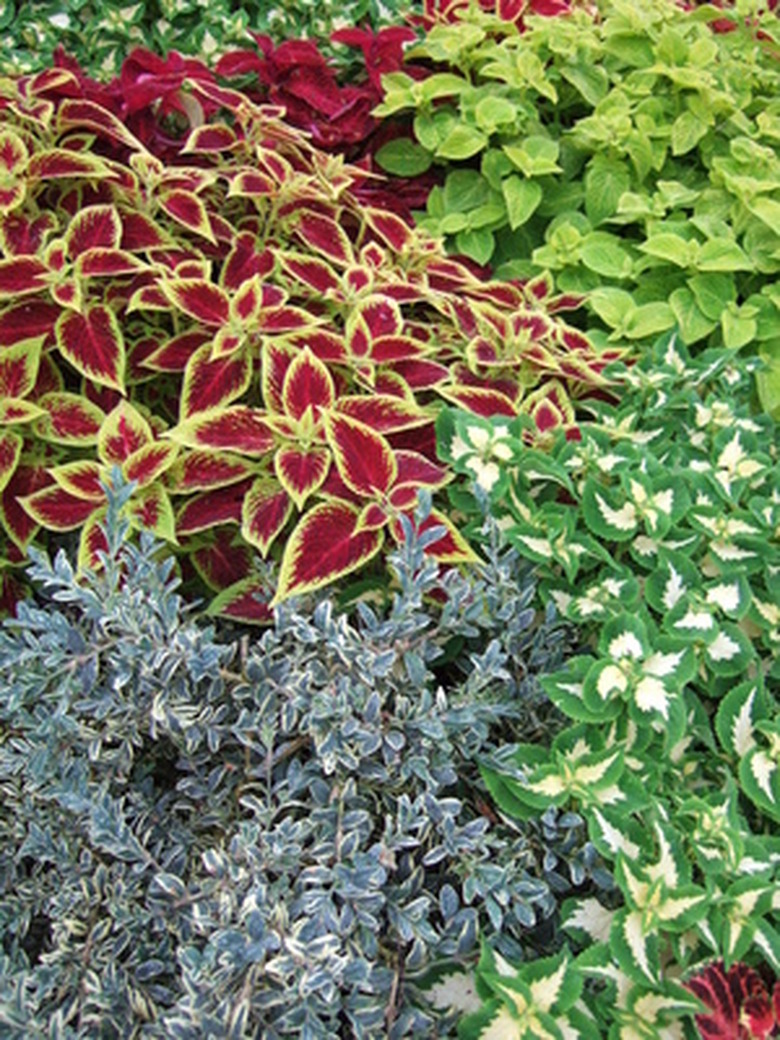Caladium Vs. Coleus
Caladiums and coleus are prized by gardeners for their ability to brighten and enhance the garden with their colorful foliage. Most often, they are featured in shade gardens to provide color and form, though both have varieties that can take different amounts of sun. Both tropical in origin, they are considered annuals in all but the hottest areas of the U.S.
Caladiums
Caladiums come in two primary leaf shapes: fancy or heart shaped, and strap-leafed. They are primarily available in shades of green, red, white, pink and yellow. Their leaves feature varying margins, veining and splotches of these colors in many varieties. Caladiums grow to a height of 12 to 30 inches.
- Caladiums and coleus are prized by gardeners for their ability to brighten and enhance the garden with their colorful foliage.
- Both tropical in origin, they are considered annuals in all but the hottest areas of the U.S. Caladiums come in two primary leaf shapes: fancy or heart shaped, and strap-leafed.
Coleus
The leaves of coleus are found in a much greater range of shape and characteristic than those of caladiums. Available in about 600 varieties, coleus leaves can be fern-like and trailing, elongated, round, lobed or serrated. Leaf size can be diminutive to extremely large. Coleus come in every color of the rainbow–coppers, peaches, purples, reds, oranges, yellows, pinks and greens. They also are available in myriad patterns, featuring splotches, veining and wild combinations of colors. Their size ranges from a mere 10 inches to heights of 3 feet.
Comparison
While both valuable foliage plants for the garden, coleus plants are available in a much greater range of color, pattern and texture than caladiums. Because of their limited color palette, caladiums do not offer the dramatic variations of coleus, yet serve traditional gardeners well. Coleus, on the other hand, offer more adventuresome gardeners a multitude of drama for the garden.
- The leaves of coleus are found in a much greater range of shape and characteristic than those of caladiums.
- While both valuable foliage plants for the garden, coleus plants are available in a much greater range of color, pattern and texture than caladiums.
Overwintering Caladiums
Caladiums are considered tender annuals in most parts of the country but can be stored or overwintered. The bulbs or tubers of caladiums can be dug up after their foliage dies and before the first frost. Remove the dead foliage and allow the tubers to dry. Then store them in a dark area packed in dry peat moss until spring.
Overwintering Coleus
To preserve coleus varieties for the next year, take cuttings before the first frost. The cuttings can be rooted in water or planted in a light potting medium, keeping the soil damp until they root.
